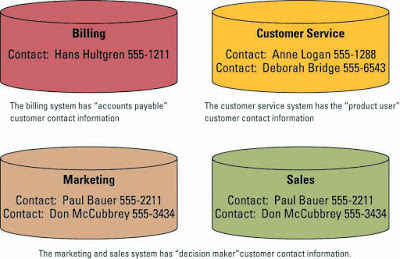History of Data Warehousing:
- Data warehouses extend the transformation of data into information
- In the 1990's executives became less concerned with the day-to-day business operations and more concerned with overall business functions
- The data warehouse provided the ability to support decision making without disrupting the day-to-day operations.
- Data warehouse-a logical collection of information - gathered from many different operational databases - that supports business analysis activities and decision - making tasks
- The primary purpose of a data warehouse is to aggregate information throughout an organization into a single repository for decision - making purposes
- Extraction, transformation, and loading (ETL)-a process that extracts information from internal and external databases, transforms the information using a common set of enterprise definitions, and loads the information into a data warehouse (take the information from internal and external, take the information of company need only, and put the information into the data)
- Data mart-contains a subset of data warehouse information (less of information, only related to financial) Eg : for mini mart, not all of things they have but for D'mart, big and all things they have put the important of information --> transform the information, what the company need --> put it to data mart
Describe the roles and purposes of data warehouse and data
marts in an organization:
- The primary purpose of data warehouse and data marts are to perform analytical processing
- The insights into organizational information that can be gained from analytical processing are instrumental in setting strategic directions and goals
Multidimensional Analysis and Data Mining:
- Data mining - the process of analyzing data to extract information not offered by the raw data alone.
- To perform data mining users need data-mining tools
- Data-mining tool - uses a variety of techniques to find patterns and relationships in large volumes of information and infers rules that predict future behavior and guide decision making
- Databases contain information in a series of two-dimensional tables
- In a data warehouse and data mart, information is multidimensional, it contains layers of columns and rows
- dimension - a particular attribute of information
Identify the importance of ensuring the cleanliness of
information throughout an organization:
- An organization must maintain high-quality information in the data warehouse
- Information cleansing and scrubbing is a process that weeds out and fixes or discards inconsistent, incorrect, or incomplete information
- Without high-quality information the organization will be unable to make good business decisions.
- An organization must maintain high-quality data in the data warehouse
- Information cleansing or scrubbing - a process that weeds out and fixes or discards inconsistent, incorrect, or incomplete information
- Contact information in an operational system

- Standardizing Customer name from Operational Systems
- Information cleansing activities
Compare the multidimensional nature of data warehouses (and
data marts) with the two-dimensional nature of databases:
- Databases contain information in a series of two-dimensional tables, which means that you can only ever view two dimensions of information at one time.
- In a data warehouse and data mart, information is multidimensional; it contains layers of columns and rows.
- Each layer in a data warehouse or data mart represent information according to an additional dimension.
- Dimensions could include such things as products, promotions, stores, category, region, stock price, date, time, and even weather. The ability to look at information from different dimensions can add tremendous business insight
Business Intelligence:
- Information that people use to support their decision-making efforts
- principle BI enablers include:technology, people, culture





Comments
Post a Comment